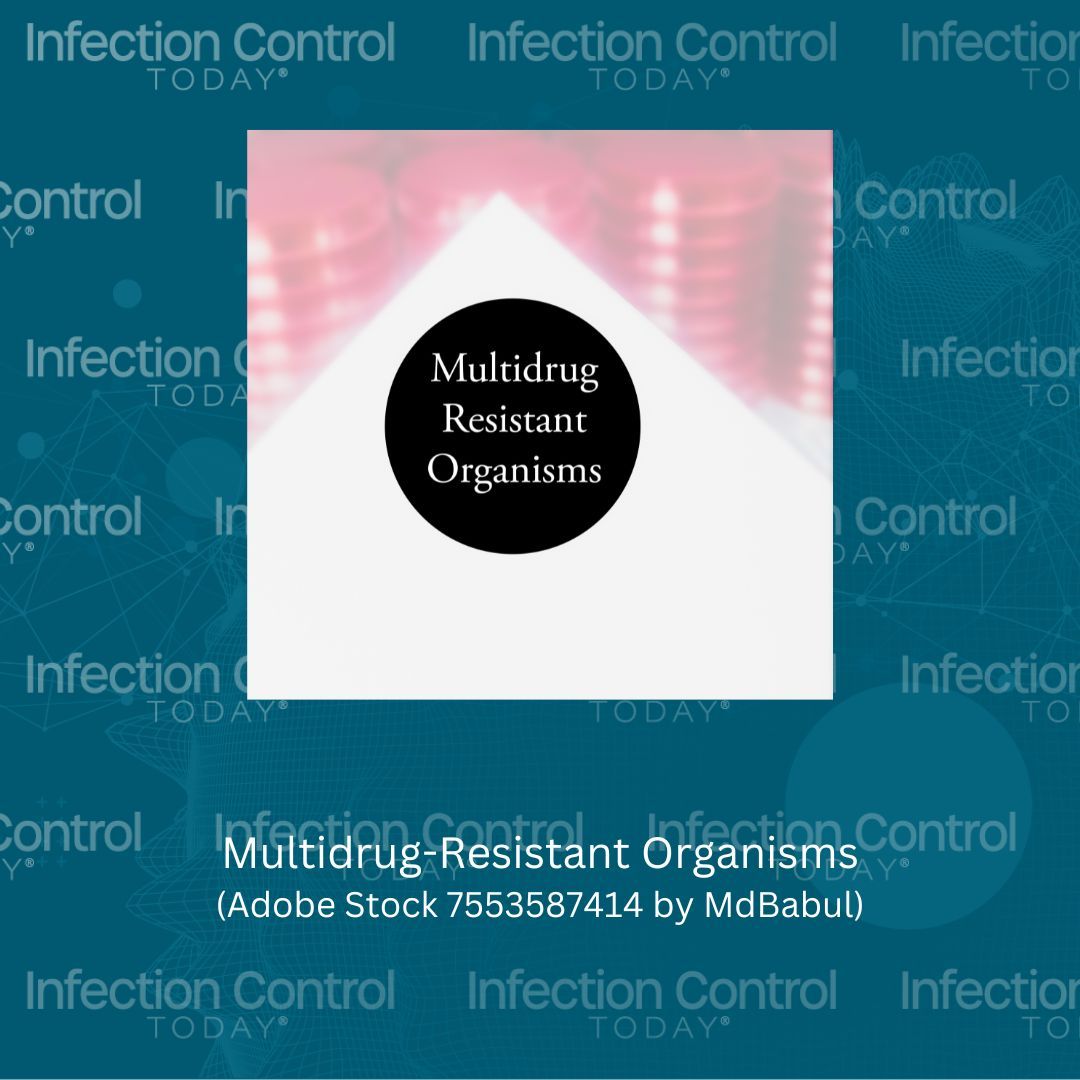“It Takes a Village”: Preventing MDRO Spread Through Public Health Partnerships
Tisha Mitsunaga, DrPH, ScM, discusses innovative approaches fostering collaboration between public health and healthcare facilities to combat multidrug-resistant organism (MDRO) spread.
Paper with words Multidrug-resistant organism (MDO).
(Adobe Stock 755358741 by MdBabul)

Preventing the spread of multidrug-resistant organisms (MDROs) must be a collaborative effort between public health departments and health care facilities. However, how can that be done effectively?
Tisha Mitsunaga, DrPH, ScM, the Prevention Epidemiology Team Lead for the California Department of Public Health’s Healthcare-Associated Infections Program, Richmond, California, speaks with Infection Control Today® (ICT®) about her presentation on this topic.
She will give her presentation, “Prevention Collaboratives Involving Public Health Departments and Healthcare Facilities,” at the Society of Epidemiology of America in Houston, Texas, held from April 16 to 19, 2024.
ICT: What inspired you to choose the topics for your presentation at the SHEA conference this year?
Tisha Mitsunaga, DrPH, ScM: While the California Department of Health Healthcare-Associated Infections Program does a lot of great work with prevention activities across the state, I’m particularly proud of our regional multidrug-resistant organism (MDRO) prevention collaboratives that have used multidisciplinary and innovative approaches to engage health care facilities in this effort. This goes beyond education and training on infection prevention and control practices but also includes supporting antimicrobial stewardship and strengthening laboratory testing using peer-to-peer learning and convening hospitals and skilled nursing facilities (SNFs) in the same room to discuss challenges and opportunities to collaborate to address these challenges.
ICT: Could you elaborate on the key points or takeaways you aimed to deliver to the audience during your session?
TM: I’d like the audience to understand that health care facilities are part of a broader health care community, and therefore, it takes a village to prevent the spread of MDROs like Candida auris in health care settings. That is, public health, with the help of hospitals and nursing homes, can support a multipronged approach, including enhanced detection through clinical isolate testing and colonization screening, infection prevention and control (IPC), and antimicrobial stewardship activities. Communication plays a key role in stakeholder collaboration and coordination of these efforts.
Additionally, there are free public health resources to complement this approach, including webinars and other educational offerings, and laboratory testing services. One successful example of a partnership in practice is public health, which works with hospitals to implement screening patients for C auris upon admission. Through this process, hospitals have identified patients with C auris not previously known to be colonized, potentially preventing the spread at both the admitting and discharging facilities.
ICT: In your opinion, what are the most significant challenges that epidemiologists and other infection prevention personnel face today, and how does your presentation address these challenges?
TM: One challenge we face is being prepared to detect and respond to the next big health care-associated pathogen—today it might be C auris, but tomorrow it could be something new. I believe the principles behind the multi-pronged approach I lay out in the presentation can provide a great foundation for epidemiologists, infection prevention personnel, and other health care personnel to contain any new MDRO: robust surveillance systems; strong core infection prevention and control practices; antimicrobial stewardship programs; and communication, collaboration and coordination among public health and health care facilities can set us up to succeed now and in the future.
ICT: Do you have anything you’d like to add?
TM: I’d like to recognize all of my colleagues who have contributed to this effort and thank our health care partners for helping us prevent the spread of MDROs—we couldn’t do it without them. I’d also like to encourage all hospitals and SNFs to engage with and support their public health departments and take advantage of the free educational and testing resources available.
Resource:
Mitsunaga, T. Prevention Collaboratives Involving Public Health Departments and Healthcare Facilities.Poster was presented at SHEA 2024. April 16-19, 2024. Houston, TX.
Beyond the Surface: Rethinking Environmental Hygiene Validation at Exchange25
June 30th 2025Environmental hygiene is about more than just shiny surfaces. At Exchange25, infection prevention experts urged the field to look deeper, rethink blame, and validate cleaning efforts across the entire care environment, not just EVS tasks.
A Controversial Reboot: New Vaccine Panel Faces Scrutiny, Support, and Sharp Divides
June 26th 2025As the newly appointed Advisory Committee on Immunization Practices (ACIP) met for the first time under sweeping changes by HHS Secretary Robert F. Kennedy Jr, the national spotlight turned to the panel’s legitimacy, vaccine guidance, and whether science or ideology would steer public health policy in a polarized era.
Getting Down and Dirty With PPE: Presentations at HSPA by Jill Holdsworth and Katie Belski
June 26th 2025In the heart of the hospital, decontamination technicians tackle one of health care’s dirtiest—and most vital—jobs. At HSPA 2025, 6 packed workshops led by experts Jill Holdsworth and Katie Belski spotlighted the crucial, often-overlooked art of PPE removal. The message was clear: proper doffing saves lives, starting with your own.